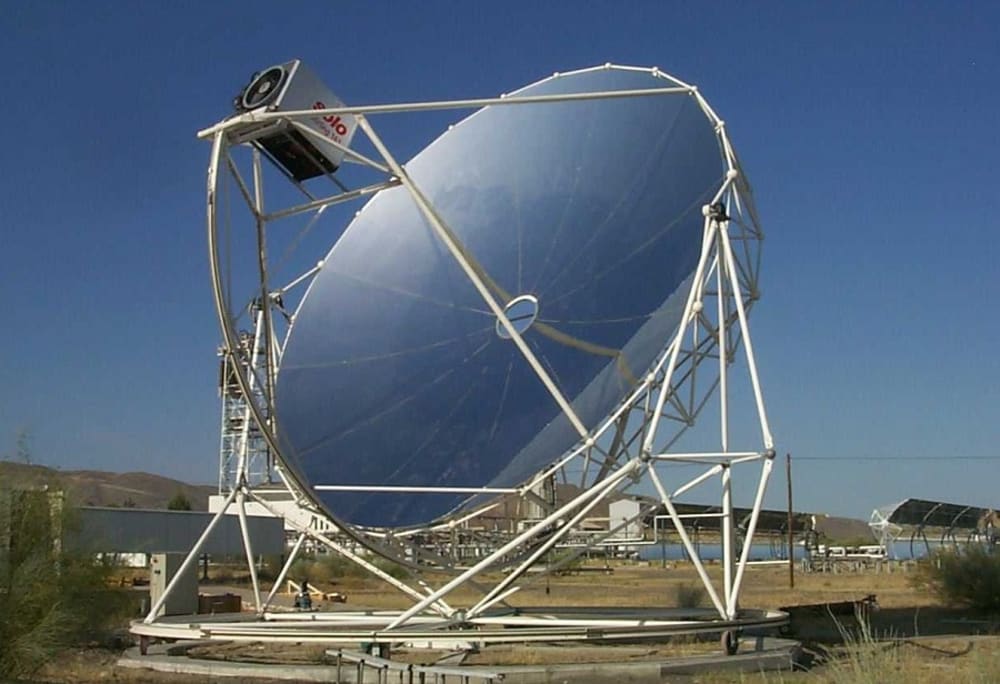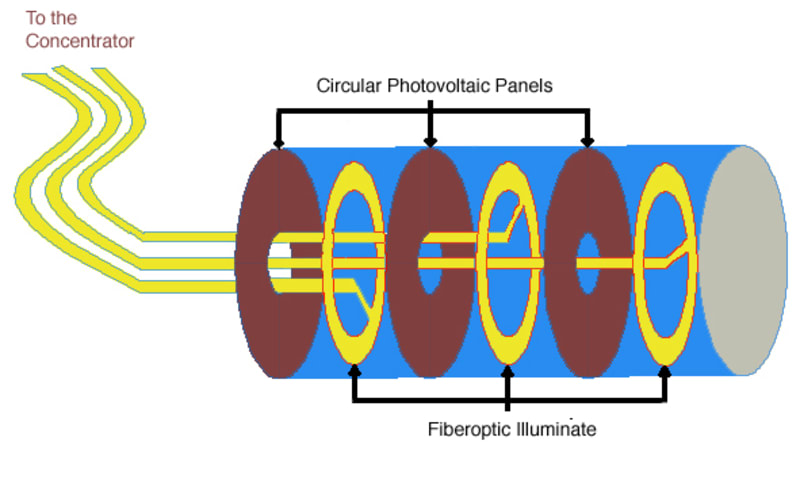As a Photovoltaic cell gets hot its ability to convert sun-light to electrical energy reduces. This increase in temperature occurs as a simple byproduct of exposure to the light of the sun. For solar arrays that don’t use collectors, the temperature increase is minor. But as collectors are used to concentrate the solar radiation on a smaller assembly of cells, the temperature increase becomes substantial.
At present, attempts to control this temperature increase involve placing the cells in cooling towers mounted to the collector, or to use water as a cooling medium. Towers increase air flow past the cells, using convective cooling to reduce temperature build-up. Water simply replaces air as a cooling medium to assit in heat transfer away from the cells.
The disadvantages of these systems are that the Towers cannot reduce the temperature down to the ambient air temperature. Thus, if the outside temperature is 110 F (desert) you could not reduce the cell temperature to even this value. Water systems can reduce the temperature further but these need pumps to circulate the water. Use of pumps means electrical consumption which then is energy lost from the solar collector. Use of water also increases the potential for corrosion and electrical short circuit.
My solution is to improve the passive cooling by actually burying the solar cells in the ground. By using fiberoptic cabling we can transfer the light energy gathered by the collector to a location some 60-80 feet beneath the surface. The lower ambient temperature this far under ground will improve the cooling of the cells by as much as 50 degrees compared to a passive tower system. It will require the creation of a cylindrical solar module, (illustration one) but it should not be difficult to manufacture.
Like this entry?
-
About the Entrant
- Name:James Gibson
- Type of entry:individual
- Patent status:none





